The reputation of Red Hook Studios’ Darkest Dungeon didn’t go unnoticed as its popularity has risen drastically since its release in 2016. At a glance, the original had a bunch of things going for it: eldritch horror, turn-based RPG, distinct art style – it ticked a lot of boxes. That is until that said reputation is superseded by its notorious difficulty. I can’t knock a challenging game, I’m well-versed in blistering action RPGs and no spring chicken to a shoot ’em up or a puzzle platformer, but those are games mastered largely on dexterity.
Even if you’ve prepped for hours and come up with a plan, Darkest Dungeon can still see you losing characters you’ve levelled up, bonded with and nurtured due to bad luck or RNG. So to my delight, Darkest Dungeon II took out some of the lofty stakes that its original presented and even changed up the genre to a run-based roguelike, but don’t expect an easier ride as the game even has a pop up at the start informing players that you will not succeed, but to push forward from your losses.
If like me you’re yet to jump into what sounds like a wicked turn-based RPG, Darkest Dungeon II will be a perfect starting point. In many ways, you can go into this sequel without any prior knowledge. Whether it’s from a story or gameplay standpoint, you’re welcomed in as if it’s your first descent into madness. Let’s descend together, shall we?
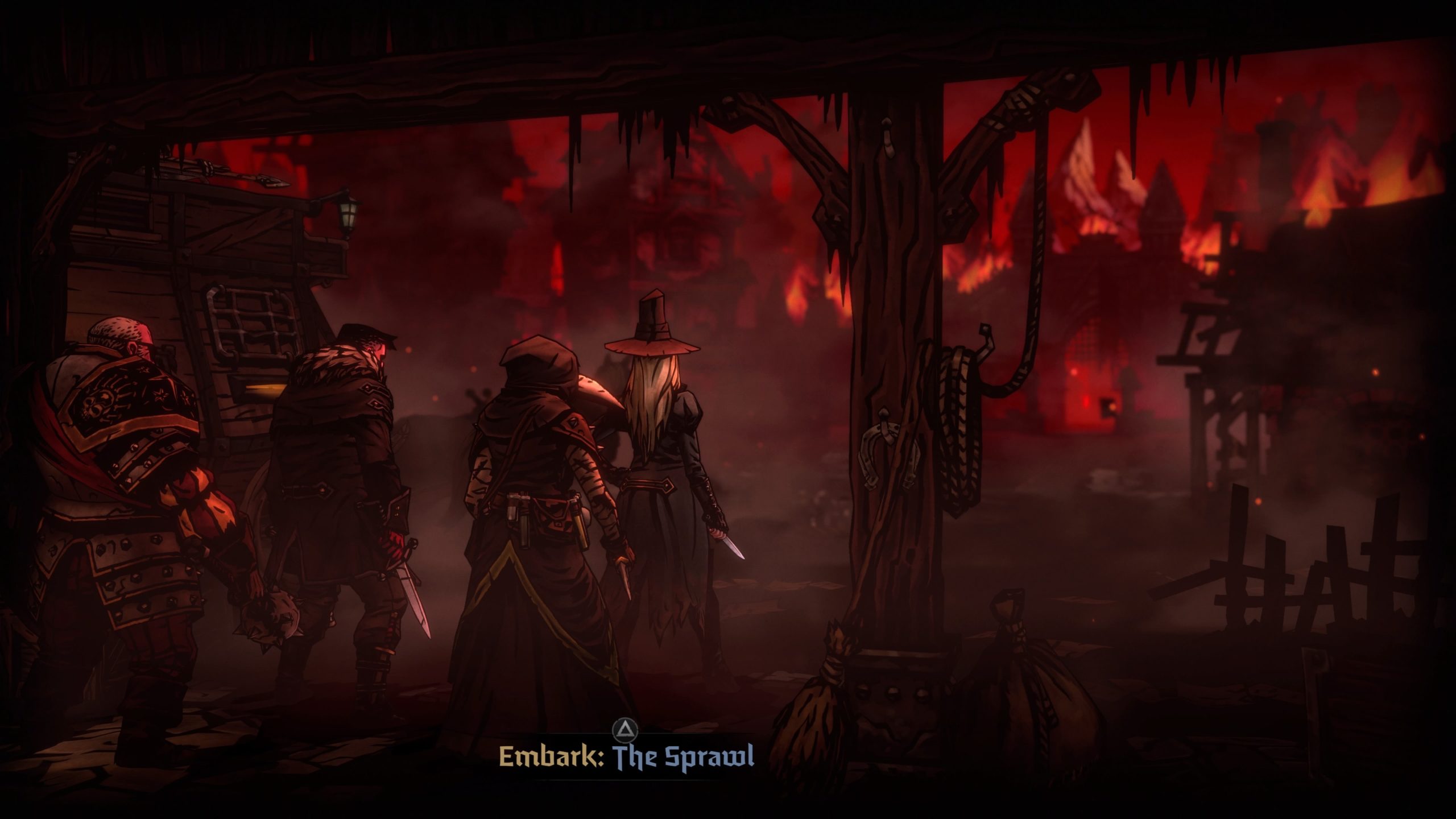
Apocalypse Right Now
The world is on the brink of destruction and the only people to save it are your crew. Banded together by the Academic (the same narrator from the original), your chosen team of four take a stagecoach to travel through the depths of insanity. At the end of the trail is a mountain, the source of the eldritch horrors that are tearing the fabric of life apart. Folks familiar with the original will see some recognisable characters. To start with, you’ll have the Highwayman, Plague Doctor, Grave Robber and Man-at-Arms but this can expand to 14 as you play through the game.
All these characters have archetypes recognisable to the RPG formula. In a roundabout way, you have your tanks, DPS, and support characters all kind of moulded into these more nuanced characters, delivering an absolute wealth of customisation to your specificities, but more on that later. You’ll be positioning your chosen team in a row of four; depending on who you pick, they all have stronger positions which the game neatly points out to you during the selection screen. Certain characters’ attacks will only work in a certain spot, others may be more susceptible to enemy attacks, so you’re quickly thrown into learning team compositions through your successes and mostly failures.
Whilst the titular dungeon is noticeably absent this time, your journey is essentially said dungeon by going for a run-based formula instead. Going forth into the darkness of night and terror, your stagecoach will oftentimes appear at crossroads, signifying different events for you to encounter. Encounters vary from battles, Field Hospitals to help heal, Watchtowers that reveal the paths ahead, and Desperate Few that require your services – you quickly learn that the game’s biggest threat is your attention to managing your resources and your team’s stress.
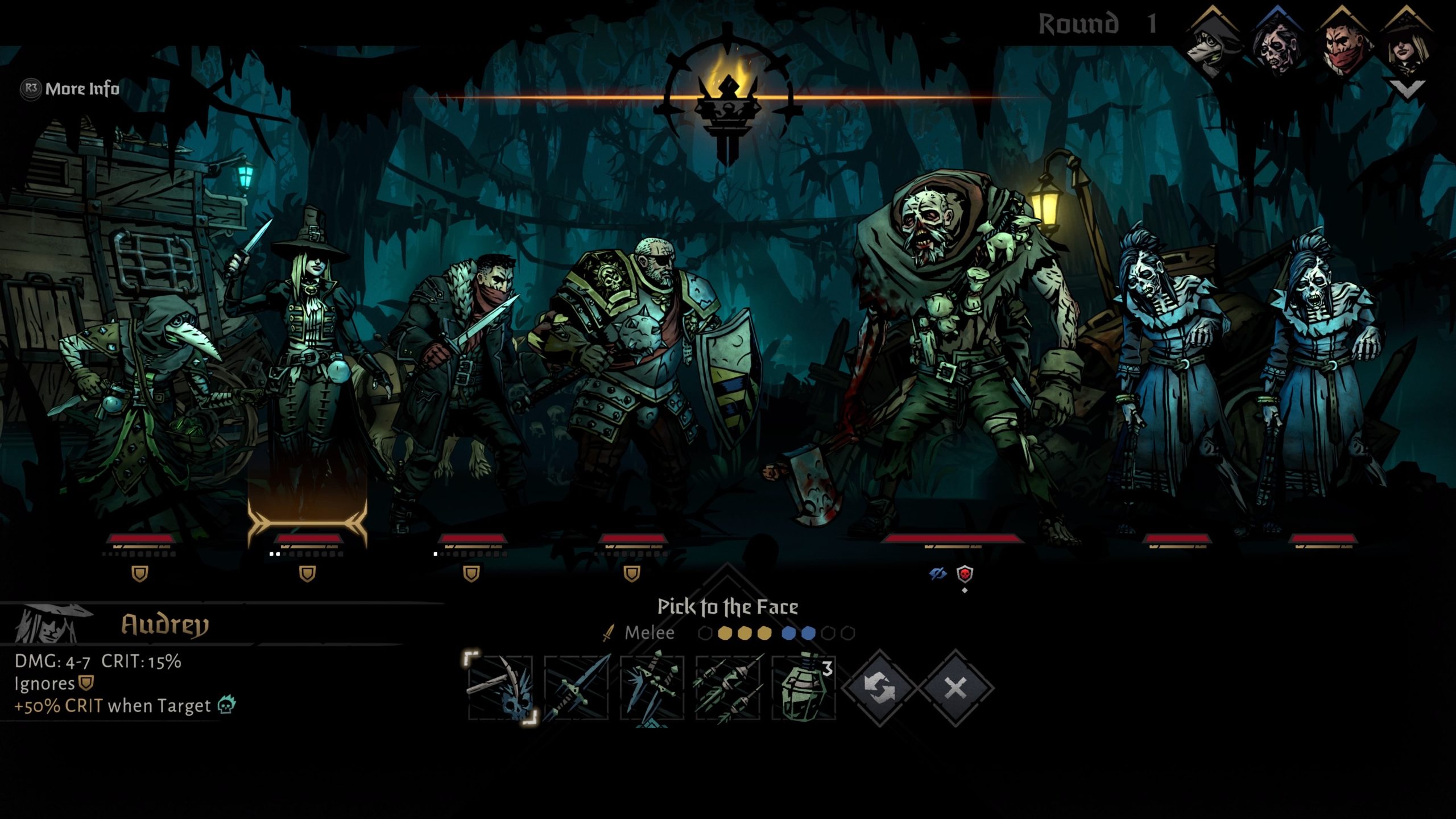
Every Fight Could Be Your Last
With your team in your chosen row of four, you’ll be clashing swords with usually a row of four enemies. There’s a predetermined order in every battle that is the first yet subtle instance of RNG. You can of course attack with melee or ranged, depending on the character, maybe heal a teammate but the utmost important thing to learn is the token system. Think of tokens as stat buffs/debuffs for yourself and your enemies. Every character can apply them and utilising them to your advantage is vital for success.
You have your more obvious poison, blinding, and defence buffs but you also have tokens like riposte, dodge and a plethora of others that both yourself and your enemy have an equal chance of inflicting. One of the game’s most unique tokens is horror and the effect of it inflicting stress. Stress was a big part of the first game’s magic which has similarly been implemented here in the sequel.
Essentially, negative actions towards a team member can build up your stress meter. If it gets full, your character will either meltdown, negatively impacting your whole team by breaking down their relationships and does damage to everyone. Or they’ll gain resolve, which fully heals the stressed team member, giving them damage buffs as a last ditch attempt to turn the tide in battle. Stress is a dire situation all around, so you’ll want to avoid it at all costs even if resolve sounds great. With all of the elements being chalked up to randomness, it often feels like you’re at odds with the game but the magic is learning against the odds.
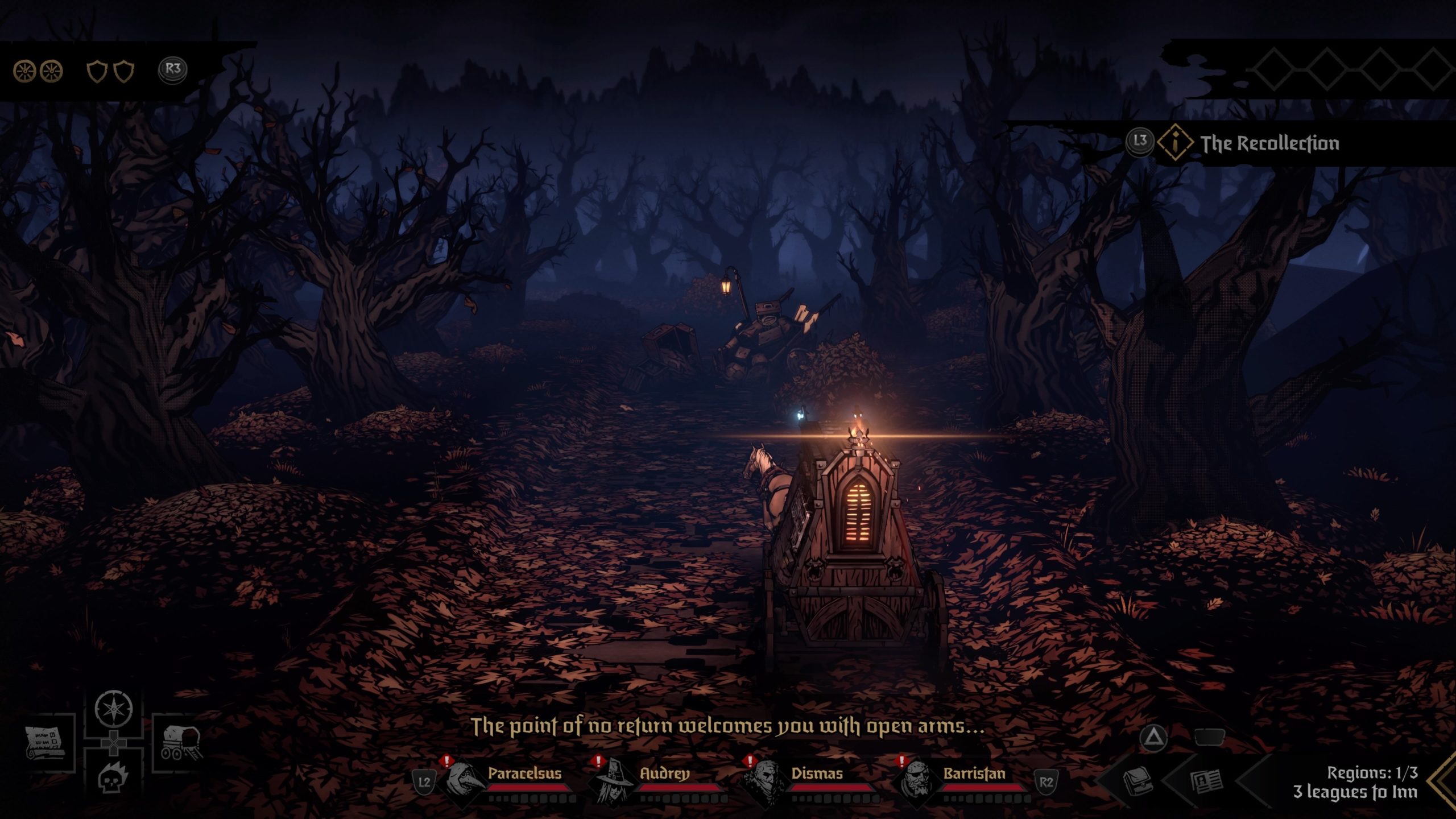
Try And Try Again
Darkest Dungeon II is a big game, mainly because the early hours are one massive grind. This is singlehandedly the game’s biggest hurdle for players to get behind. Depending on your ability, you’re spending at least 8-10 hours of the game trying, failing and gathering resources to try and be at least a little competent. Thankfully, every run isn’t pointless as you’ll always earn currency to spend on upgrading your team members, your stagecoach or unlocking new items to find out on the field.
However, this is extremely incremental and can feel sluggish if you’re not thrilled by the moment-to-moment gameplay. Knowing the next fight might be your last after doing a run for 30 or so minutes is disheartening, to say the least. And there’s no real help on the game’s part to assist you, outside of giving you the tools to learn how to play. There are hundreds of trinkets to unlock and find that do all kinds of buffs you can imagine with the list of tokens. They can even completely negate negative tokens, increase damage output, increase critical hit chance – and more, thus feeling like an infinite amount of opportunities.
If you are someone who loves to go deep with all the stat menus, tinker with team compositions, apply new attacks by finding them in the Shrine of Memories (flashback events for a character), then Darkest Dungeon II will be a game you could sink hundreds of hours into. If you can’t already tell, I have had a punishing time with the game but not a terrible one. Like the game told me at the top, this is brutal, failure is inevitable but I didn’t quite realise to what extent. With that said, I’m still smiling, even with a black eye and bloody nose.
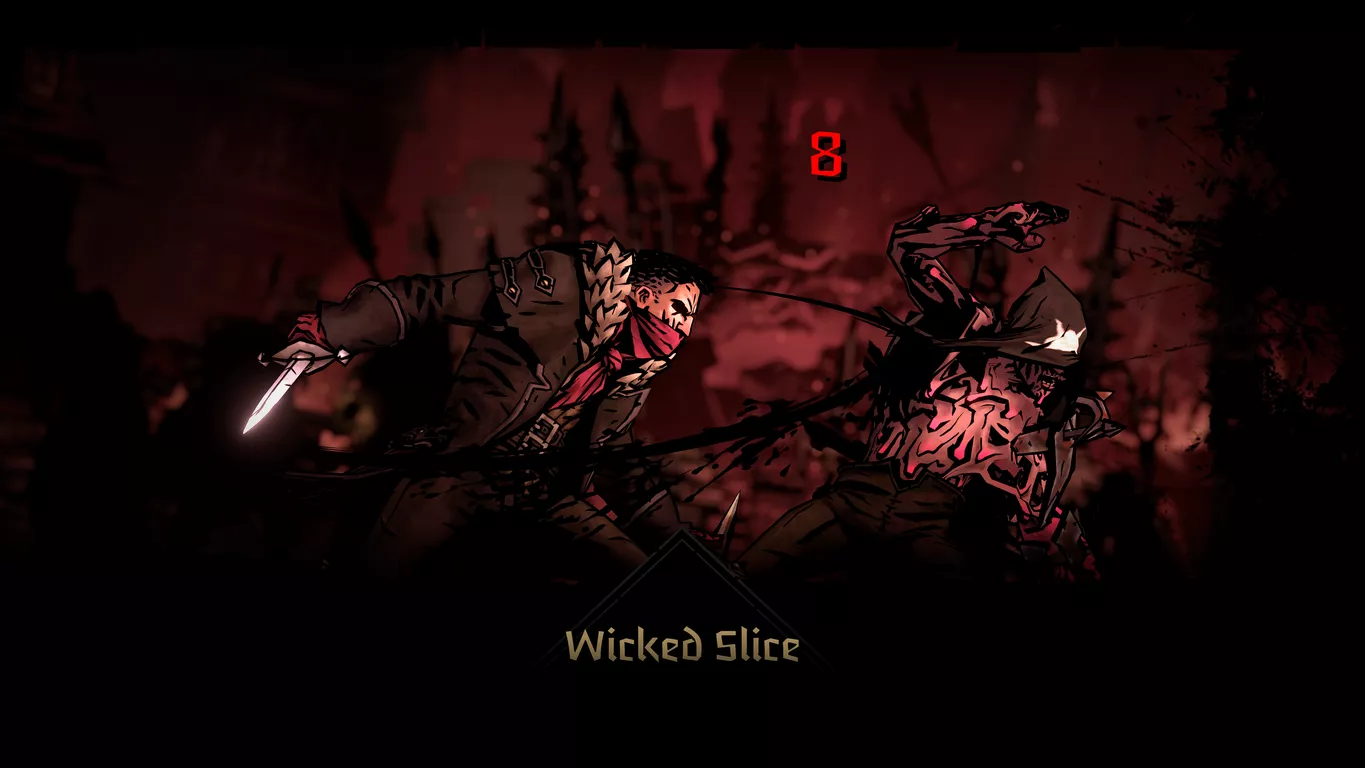
One More Run
During your runs, you’ll also be met with decisions to make during the events I mentioned earlier. These decisions come from the characters on your team who already have some pre-determined emotional attributes that lean into the archetype they have. The Highwayman is often despondent to kindness but loves a fight and his action (if you choose it) dictates that result. Your choices can then also be met with support from the other characters or contempt, making each other’s relationships change the dynamic of your team’s morale.
For instance, in battle, if someone is chosen to be healed over another, the character who wasn’t healed will remember that and may negatively impact their relationship. It all feels quite banal at the start but these run-based relationships truly define the mettle of your composition. An act of kindness could change the tide in a major battle and some will even team up to be a force to reckon with. Again, this is all partially a stat of RNG that you can kind of work with but you’ll have to be wary of where your allegiances lie.
Moments of respite are necessary along the journey which is where the Inns come into play. They are essentially checkpoints where you’ll want to turn in some of your loot from travels, lick some of your wounds, and alleviate stress. They are however very few and far between, making them feel like a proper safehaven from hell. It’s also a good opportunity to turn back and take all of your run’s rewards to spend back at the starting menu if you think the journey ahead will meet peril.
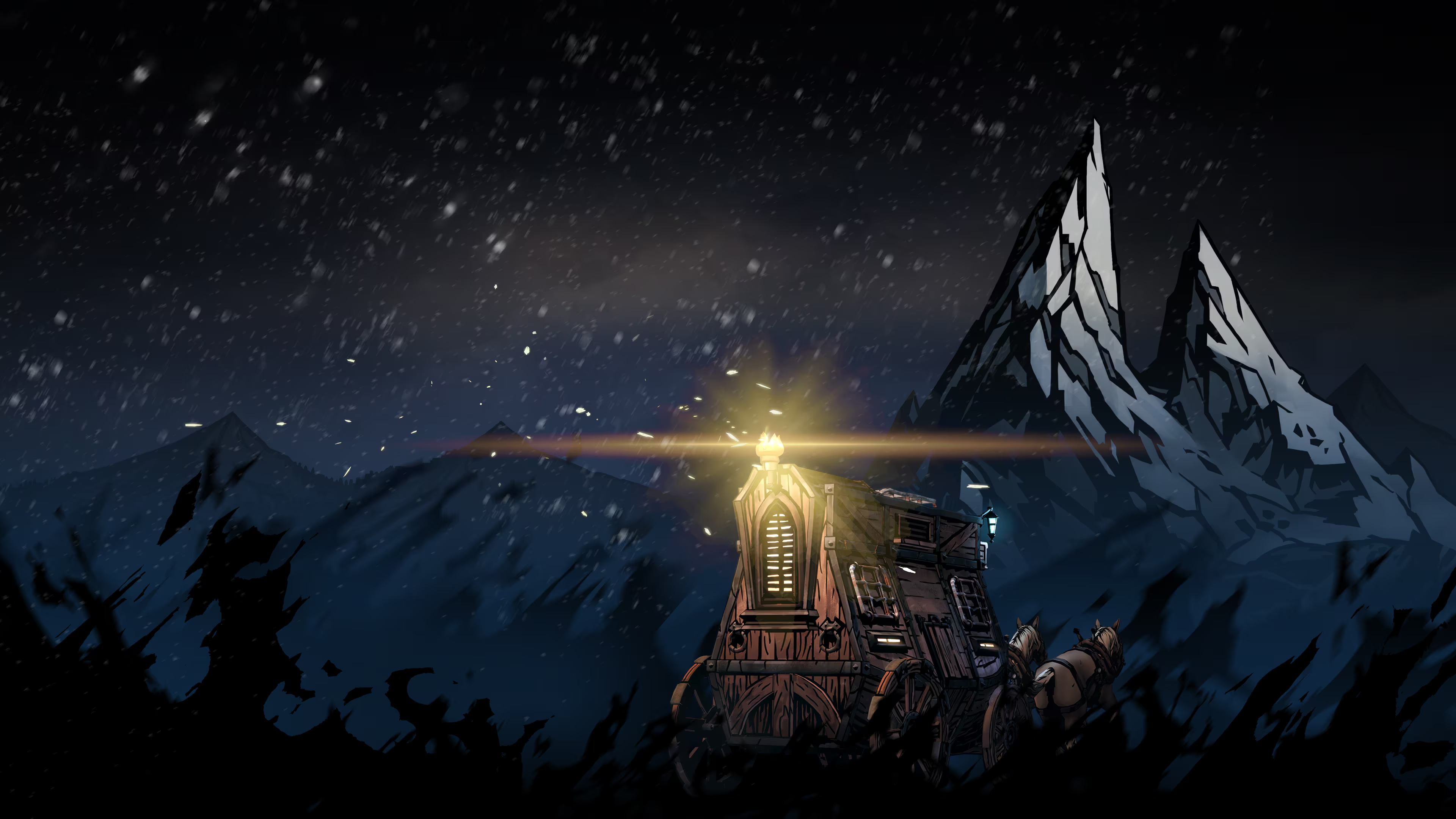
Darker Even Still
To quell some of my difficulty woes is Darkest Dungeon II’s overall presentation. Moving on from Red Hook Studio’s proprietary engine in the original, the sequel takes leaps in its aesthetics with the use of the Unity engine. The sequel has maintained that thick-lined almost Mike Mignola art style but with a 3D twist and it is stunning. All the environments your stagecoach wades through, the eldritch enemy designs, and of course, the main characters carrying the torch of hope all look fantastic and moody.
Some console-centric hiccups do dampen the look, namely a verbose UI that is necessary but daunting to learn. Clicking through those menus can also be quite finicky and sometimes feels like it doesn’t flat-out work. Instances like, not being able to attach trinkets to characters, or your stagecoach aren’t well signposted. To be clear, I do think it’s working but the game doesn’t tell you what you can’t do in the menus so the opening hours left me perplexed. Outside of that, the token system is a fulfilling mechanic but it is just a lot of numbers and symbols that do require a good time to wrap your head around.
These are all seemingly minor to what is otherwise a complex, white-knuckle turn-based RPG roguelike that does have some console growing pains you probably won’t see on PC. With that said, Darkest Dungeon II has an incredible sense of place with so many complex systems to get to grips with. The combat is quick to pick up but has a daunting skill ceiling to master. If you are willing to put the time into the unforgiving dozen or so hours, what you’ll see at the other side is a refined death-defying RPG.
Despite the console-centric flaw of navigating menus and unforgiving opening hours, Darkest Dungeon II is a brutally brilliant turn-based RPG roguelike. From the flawless presentation to the complex systems, the game leaves so much room for near-endless opportunities to tinker with – Darkest Dungeon II is a challenge you can’t help but accept.

Darkest Dungeon II is available now on PlayStation 5 (review platform), PlayStation 4, Xbox Series X|S, Xbox One, Nintendo Switch and PC via Steam.
Developer: Red Hook Studios
Publisher: Red Hook Studios
Disclaimer: In order to complete this preview, we were provided with a promotional copy of the game. For our full review policy, please go here.
If you enjoyed this article or any more of our content, please consider our Patreon.
Make sure to follow Finger Guns on our social channels –Twitter, Facebook, Twitch, Spotify or Apple Podcasts – to keep up to date on our news, reviews and features.
